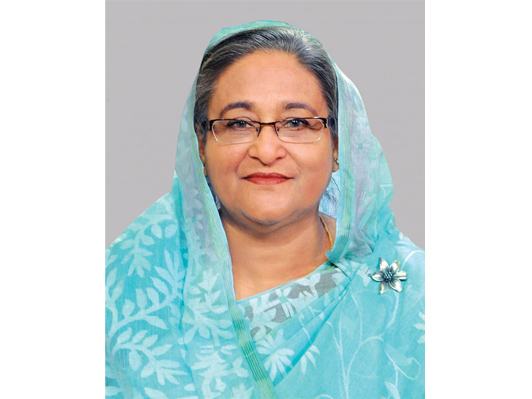DHAKA, Aug 29, 2018 (BSS) – Prime Minister Sheikh Hasina leaves Dhaka for
Kathmandu tomorrow morning on a two-day official visit to Nepal to attend the
4th Summit of the Bay of Bengal Initiative for Multi-Sectoral Technical and
Economic Cooperation (BIMSTEC).
The summit will commence tomorrow afternoon at Hotel Soaltee Crowne Plaza in
the Nepalese capital with the participation of the leaders of the seven-
nation regional grouping that constitutes a bridge between South and South
East Asia and represents a reinforcement of relations among these countries.
On the sidelines of the summit, the Bangladesh premier will hold meetings
with Indian Prime Minister Narendra Modi, Nepalese Prime Minister KP Sharma
Oli and Chief Adviser (head of interim government) of Bhutan Dasho Tshering
Wangchuk.
A VVIP flight of Biman Bangladesh Airlines carrying the Prime Minister and
members of her entourage will depart Hazrat Shahjalal International Airport
here for Kathmandu tomorrow morning.
The flight is scheduled to reach Tribhuvan International Airport in
Kathmandu at 9:15 am local time (Thursday).
Nepalese Deputy Prime Minister Ishwor Pokharel and Bangladesh Ambassador to
Nepal Mashfee Binte Shams will receive the Bangladesh premier at the airport.
After the reception at the airport, Sheikh Hasina will be escorted to Hotel
Soaltee Crowne Plaza at Tahachal Marg in a ceremonial motorcade where she
will be staying during her visit to Nepal.
On the first day of her visit, the Prime Minister will first hold a meeting
with Nepalese Prime Minister KP Sharma Oli at her place of residence.
Later, Chief Adviser (head of interim government) of Bhutan Dasho Tshering
Wangchuk will call on Sheikh Hasina at the same place.
The Bangladesh Prime Minister and other BIMSTEC leaders will pay a joint
call on Nepalese President Bidya Devi Bhandari at Sheetal Nibash, the
Presidential Palace, in Kathmandu.
They will also attend a banquet luncheon there to be hosted by the Nepalese
President.
In the afternoon, Sheikh Hasina along with other leaders will attend the
opening session of the 4th BIMSTEC Summit at Hotel Soaltee Crowne Plaza.
Countering terrorism, enhancing regional connectivity and boosting trade
are expected to be key focus of the summit of the leaders of the member
states of South Asia and South East Asia.
After the opening session of the BIMSTEC Summit, the Bangladesh Prime
Minister will hold a meeting with her Indian counterpart Narendra Modi at the
Bilateral Meeting Room of Hotel Soaltee Crowne Plaza in the evening.
Sheikh Hasina and other BIMSTEC leaders will also join a gala dinner to be
hosted by Nepalese Prime Minister KP Sharma Oli in the city’s Hyatt Regency
Hotel in the evening on that day.
On Friday morning, the Bangladesh Prime Minister and other leaders will
join the BIMSTEC Leaders’ Retreat Session and the closing session of the 4th
BIMSTEC Summit.
Sheikh Hasina will return home on Friday afternoon.
This sub-regional organisation came into being on June 6, 1997 through the
Bangkok Declaration. It comprises seven member states – five from South Asia
(Bangladesh, Bhutan, India, Nepal and Sri Lanka) and two from Southeast Asia
(Myanmar and Thailand).
Initially, the economic bloc was formed with four Member States with the
acronym ‘BIST-EC’ (Bangladesh, India, Sri Lanka and Thailand Economic
Cooperation).
Following the inclusion of Myanmar on December 22, 1997 during a special
Ministerial Meeting in Bangkok, the group was renamed ‘BIMST-EC’ (Bangladesh,
India, Myanmar, Sri Lanka and Thailand Economic Cooperation).
With the admission of Nepal and Bhutan at the 6th Ministerial Meeting
(February 2004, Thailand), the name of the group was changed to ‘Bay of
Bengal Initiative for Multi-Sectoral Technical and Economic Cooperation’
(BIMSTEC).
The objective of building such an alliance was to harness shared and
accelerated growth through mutual cooperation in different areas of common
interests by mitigating the onslaught of globalisation and by utilising
regional resources and geographical advantages.



